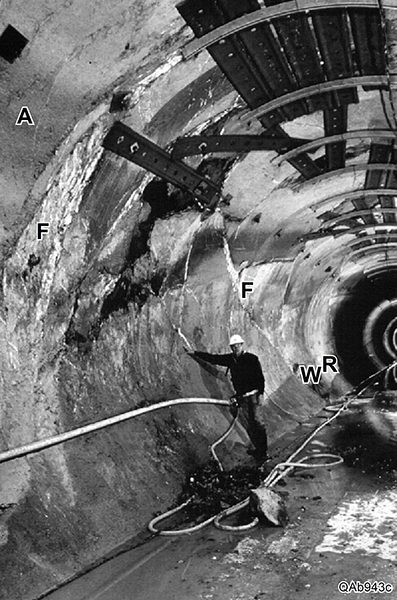Devine Test Site: Austin Chalk
Over most of its range, the Austin Chalk is dominated by two interbedding end-member rock types, chalk and marl (Figure 5). Tan to white chalk beds are composed of partly recrystalized, fragmented nannoplankton matrix having 5 to 25 percent foraminifers and whole or fragmented inoceramid pelecypods.

Figure 5. Complex normal fault zone in upper Lower Austin Chalk at the SSC site, showing large normal faults (F) and smaller antithetic faults (A), mainly calcite filled. Almost 70 ft of throw across this zone has been interpreted from borehole data. Rollover monocline (R) is found on the far hanging wall. Water (W) was produced from only one small (3-ft throw) fault.
The chalk is relatively homogeneous compared with other carbonates. Its original low-Mg calcite composition has not been greatly altered by diagenesis. Marl beds are darker than chalk and consist of chalk mixed with 12 to 40 percent clay and as much as 3.5 percent organic carbon (Collins and others, 1992). Intermediate mixtures of chalk and marl (marly chalk) also occur. Locally, thin (<1 ft thick) bentonite (expansive clay) beds can be found, and basalt plugs penetrate the formation.
As indicated by fracture styles observed in exposures along the Balcones Fault Zone, chalks are generally brittle and display well-defined fractures, whereas marls are relatively ductile and may smear along fault surfaces and expand into fault apertures.